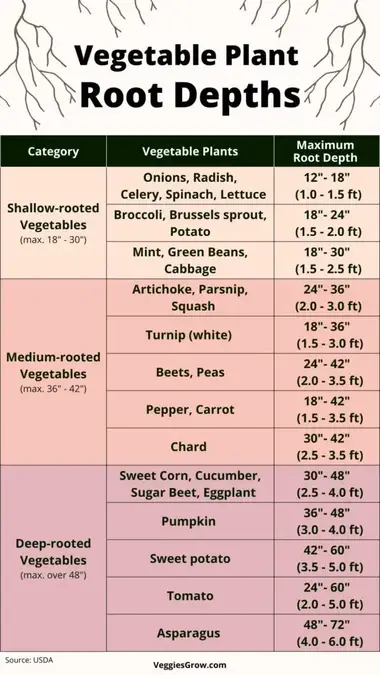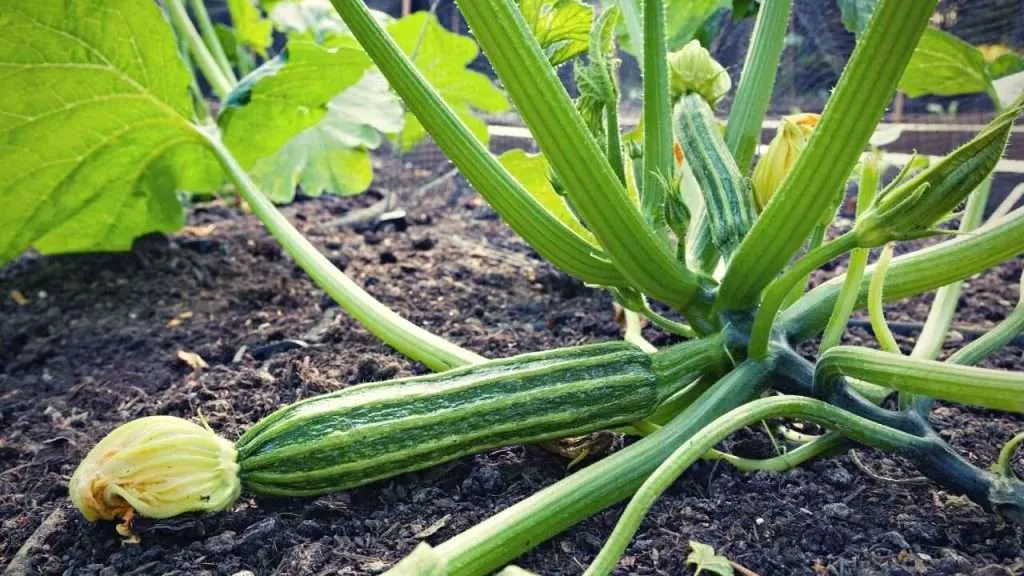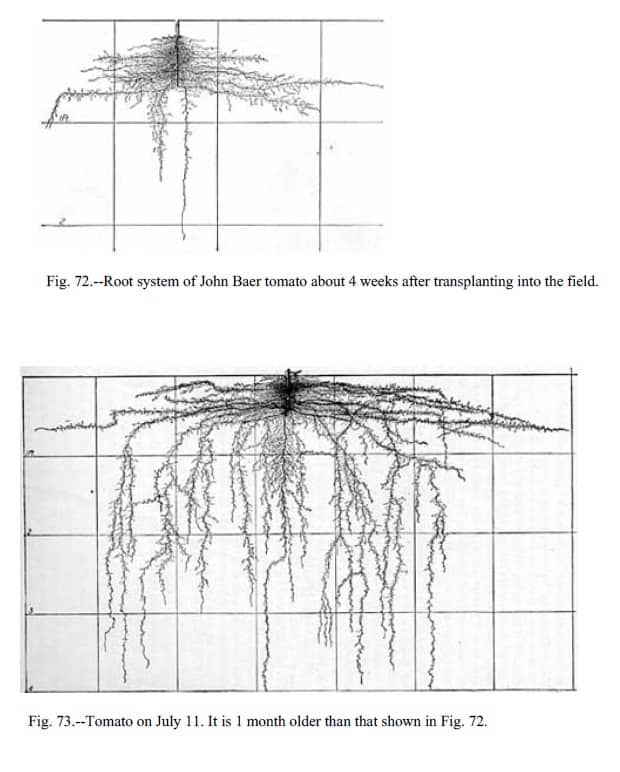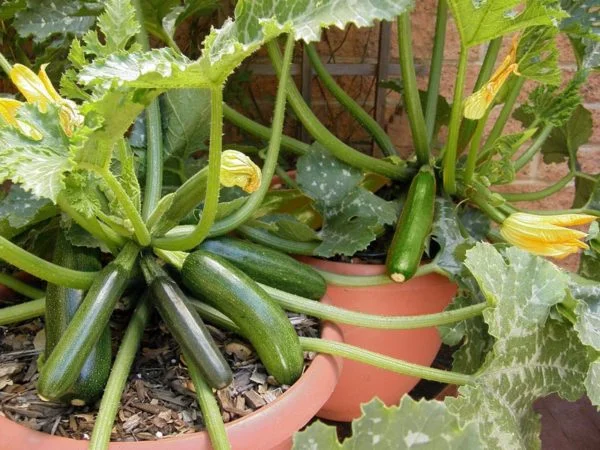Hey there! Have you ever wondered how deep zucchini roots can go? Well, get ready to dive into the fascinating world beneath the soil’s surface as we explore the depths of zucchini roots. Zucchini plants are known for their prolific growth and delicious fruits, but what lies below the ground is equally intriguing. Join us on this journey to discover just how deep those roots can venture and uncover the secrets hidden beneath the earth’s surface. So, fasten your seatbelts and get ready to explore the hidden world of zucchini roots!
Factors Affecting the Depth of Zucchini Roots
Soil Type
The type of soil in which zucchini plants are grown plays a crucial role in determining the depth of their roots. Zucchini plants prefer loose, well-drained soil that allows for easy root penetration. Sandy soils tend to have deeper root systems due to their better drainage, while clay soils can limit root depth as they tend to be more compact.
Water Availability
Water availability is essential for the growth and development of zucchini roots. Adequate water supply encourages deep root growth as the roots search for water in the soil. In contrast, drought conditions can restrict root depth as the plant focuses on conserving water and reducing transpiration. Therefore, ensuring an adequate and consistent water supply is crucial for promoting deep root growth in zucchini.
Nutrient Availability
The availability of nutrients in the soil also plays a significant role in determining the depth of zucchini roots. Essential nutrients, such as nitrogen, phosphorus, and potassium, are necessary for root development. If these nutrients are scarce, the plant may not invest in developing deep roots. Therefore, maintaining proper nutrient levels through fertilization practices can encourage deep root growth in zucchini plants.
Temperature
Temperature can affect the depth to which zucchini roots grow. Zucchini plants prefer moderate temperatures for optimal growth. Extreme temperatures, either too hot or too cold, can hinder root development and limit the depth of the root system. Providing a suitable temperature range for zucchini plants, especially during the early stages of growth, can promote deeper root growth.
Plant Age and Health
The age and health of the zucchini plant can also influence the depth of its roots. Younger plants may have shallower root systems compared to mature ones. As the plant matures and establishes, it invests more energy into root development, leading to deeper root growth. Additionally, maintaining the overall health of the plant through proper care, disease prevention, and pest management can contribute to the development of a robust and deep root system.
Root System of Zucchini
Primary Roots
Zucchini plants initially develop primary roots, which are the first roots to emerge from the seed. These roots grow vertically downward and form the foundation for the entire root system. Primary roots are responsible for anchoring the plant and absorbing water and nutrients from the soil.
Secondary Roots
Secondary roots, also known as lateral roots, emerge from the primary roots and grow horizontally in search of water and nutrients. These roots play a crucial role in increasing the overall surface area available for absorption and providing stability to the plant. Secondary roots continue to branch out as the plant grows, contributing to the development of a dense root system.
Lateral Roots
Lateral roots are an integral part of the zucchini plant’s root system. These roots grow horizontally from the primary and secondary roots and are responsible for absorbing water and nutrients from the soil. They also aid in stabilizing the plant by growing laterally and interconnecting with neighboring roots.
Taproot Development
Unlike some other plants, zucchini plants do not possess a prominent taproot. The primary root system in zucchini consists of a collection of fine roots that spread out horizontally rather than a single dominant vertical root. This branching root system allows for efficient water and nutrient absorption from a larger soil area.

The Role of Root Depth in Zucchini Growth
Water Absorption
Root depth in zucchini plants is crucial for efficient water absorption. Deeper roots can access water from lower layers of the soil, which helps the plant withstand dry periods and reduces dependency on surface water. With access to a deeper water source, zucchini plants can maintain optimal hydration, ensuring healthy growth and development.
Nutrient Uptake
Deep root systems enable zucchini plants to access a larger volume of soil, increasing their chances of encountering nutrient-rich pockets. The deeper the root system, the more nutrients the plant can absorb. Adequate nutrient uptake is vital for proper plant growth, foliage development, flowering, and fruit production in zucchini.
Stability and Anchorage
A deep root system provides stability and anchorage to zucchini plants, especially during strong winds or heavy rainfall. The anchoring roots penetrate deeper into the soil, enhancing the plant’s ability to withstand external forces and preventing it from toppling over. A sturdy root system supports the plants throughout their entire life cycle, minimizing the risk of damage.
Interactions with Soil Microorganisms
Deep root systems can foster beneficial interactions between zucchini roots and soil microorganisms. Many beneficial soil bacteria and fungi reside in the deeper layers of the soil, and deep roots provide a pathway for these microorganisms to establish symbiotic relationships with the plant. These beneficial interactions can enhance nutrient availability, improve soil structure, and provide some level of disease suppression.
Root Growth Patterns
Early Development
During the early stages of zucchini plant growth, the primary focus is on establishing a strong root system. Primary roots elongate and penetrate deeper into the soil to anchor the plant and search for water and nutrients. This initial root growth provides a solid foundation for the plant’s future development.
Vegetative Growth
As the zucchini plant enters the vegetative growth stage, secondary and lateral roots start proliferating. These roots grow horizontally, interconnecting with neighboring roots and expanding the overall root system. The branching nature of the root system allows for enhanced nutrient absorption and supports the plant’s vegetative growth, including leaf production and stem development.
Reproductive Stage
During the reproductive stage, when zucchini plants start producing flowers and fruits, the root system continues to grow and explore the soil for necessary resources. The increased root surface area enables efficient water and nutrient uptake, ensuring the plant’s energy is directed towards fruit development and ripening.

Investigating Zucchini Root Depth
Field Studies
Field studies play a vital role in understanding the depth of zucchini roots in different growing conditions. Researchers can observe and measure root depth by carefully excavating plants and recording root characteristics at various growth stages. Field studies help identify the factors influencing root depth and provide valuable insights for optimizing zucchini cultivation practices.
Excavation and Root Sampling
Excavation of zucchini plants allows for a more in-depth analysis of root depth and architecture. Scientists can carefully extract the plant, gently wash away the soil, and examine the root system. Root sampling techniques, such as coring or trenching, can provide quantitative data on root length, biomass, and depth distribution. These methods help researchers understand the relationship between root characteristics and plant performance.
Root Imaging Techniques
Advancements in root imaging techniques, such as use of ground-penetrating radar (GPR), X-ray computed tomography (CT), and magnetic resonance imaging (MRI), have revolutionized the study of root systems. These non-destructive methods allow researchers to visualize and analyze the root structure and depth without disturbing the plant. Root imaging techniques provide valuable data to researchers studying zucchini root development.
Optimizing Root Development for Zucchini
Proper Soil Preparation
Creating a suitable growing environment through proper soil preparation is crucial for promoting deep root growth in zucchini. This involves removing any debris, loosening compacted soil, and incorporating organic matter to enhance soil structure and drainage. Adequate soil preparation provides favorable conditions for root penetration and expansion.
Watering Techniques
Implementing appropriate watering techniques is essential for encouraging deep root growth in zucchini. Deep, infrequent watering promotes downward root growth, as the roots strive to reach the water source. Watering deeply and allowing the soil to dry out slightly between watering cycles encourages roots to explore deeper soil layers, resulting in a robust root system.
Fertilization and Nutrient Management
Maintaining a balanced and timely fertilization regimen is vital for optimal zucchini root development. Regular soil testing can help identify nutrient deficiencies or imbalances, allowing for targeted fertilization. Customized nutrient management ensures that the zucchini plants have access to the necessary nutrients to support deep root growth and overall plant health.
Mulching
Applying a layer of organic mulch around zucchini plants offers several benefits to root development. Mulch helps conserve soil moisture, moderates soil temperature, and reduces weed competition. This favorable environment encourages root growth and allows zucchini plants to establish deeper, more extensive root systems.
Companion Planting
Companion planting involves growing compatible plants alongside zucchini to enhance overall growth and health. Selecting companion plants that have deep-rooting systems, such as legumes or perennial herbs, can indirectly promote deep root growth in zucchini. These companion plants can help improve soil structure and nutrient availability, benefiting the entire root system.

The Relationship Between Zucchini Roots and Companion Plants
Enhancing Biodiversity
Introducing companion plants into the zucchini growing area can enhance biodiversity and overall ecosystem health. Different plants have unique root exudates, which are organic compounds released by the roots. These exudates can attract beneficial soil organisms and improve soil fertility, benefiting the entire plant community.
Complementary Nutrient Uptake
Companion plants with different nutrient requirements can complement zucchini’s nutrient uptake. For example, leguminous companion plants fix atmospheric nitrogen into forms that other plants, including zucchini, can absorb. By interplanting zucchini with appropriate companions, the availability of essential nutrients in the soil can be enhanced, facilitating deep root growth for all plants involved.
Pest and Disease Management
Some companion plants possess natural pest-repellent properties, which can help protect zucchini from common pests and diseases. For instance, marigolds repel nematodes, while basil repels aphids. By deterring pests, companion plants reduce the stress on zucchini plants, allowing them to allocate more resources to root development and overall growth.
Improving Soil Structure
Certain companion plants, like deep-rooted cover crops or perennial grasses, contribute to improving soil structure. These plants, with their extensive root systems, help break up compacted soil, increase soil porosity, and enhance water infiltration. Improved soil structure provides easier root penetration and encourages deep root growth in zucchini plants.
Importance of Deep Roots for Zucchini Varieties
Improved Drought Resistance
Zucchini varieties with deep root systems are better equipped to withstand drought conditions. Deep roots can access water stored in lower soil layers, ensuring the plant remains hydrated during dry spells. This trait enables zucchini plants to survive and continue growing, resulting in higher yields and overall better crop performance.
Reduced Soil Erosion
Deep-rooted zucchini varieties play a crucial role in reducing soil erosion. The extensive network of roots binds the soil particles together, preventing erosion caused by rain or wind. By maintaining soil integrity, deep-rooted zucchini plants contribute to soil conservation efforts and help preserve valuable agricultural land.
Better Nutrient Utilization
Deep roots enable zucchini plants to access a larger volume of soil, increasing the chances of encountering nutrient-rich zones. With access to a diverse range of soil nutrients, deep-rooted varieties can efficiently utilize these resources for optimal growth. This enhanced nutrient utilization translates into healthier plants, increased productivity, and improved quality of zucchini harvests.
Higher Crop Yields
Deep-rooted zucchini varieties typically have higher crop yields compared to shallow-rooted ones. The extensive root system allows the plant to absorb more water and nutrients, resulting in improved plant health and vigor. In turn, healthier plants produce more flowers and fruits, leading to a bountiful zucchini harvest.

Tips for Encouraging Deep Root Growth in Zucchini
Appropriate Plant Spacing
Providing adequate space between zucchini plants is vital for promoting deep root growth. Overcrowding can restrict root development, as the plants compete for space and resources. Proper plant spacing allows each zucchini plant to establish a strong root system without hindrance, enabling deeper root penetration into the soil.
Avoiding Excessive Soil Disturbance
Excessive soil disturbance, such as excessive tilling or cultivating, can disrupt the delicate balance of the soil ecosystem and damage root systems. Minimizing unnecessary soil disturbance preserves the natural structure of the soil and encourages deep root growth in zucchini plants. Adopting conservation tillage practices, such as no-till or reduced tillage, can help maintain a healthy soil environment.
Initiating Proper Irrigation
Implementing a proper irrigation strategy is crucial for encouraging deep root growth in zucchini. Water deeply and allow the soil to partially dry out between watering sessions. This approach ensures that the roots are motivated to explore deeper soil layers in search of water, resulting in a stronger and more extensive root system.
Regular Soil Testing and Adjustment
Regular soil testing is essential for monitoring nutrient levels and soil pH. Adjusting soil pH and nutrient levels based on the test results promotes optimal root development in zucchini. Maintaining an appropriate pH range and nutrient availability ensures that the plants have the necessary resources to develop deep and healthy root systems.
Conclusion
Understanding the factors affecting the depth of zucchini roots is crucial for optimizing their growth and development. Soil type, water availability, nutrient availability, temperature, and plant age and health all play significant roles in determining root depth. Deep-rooted zucchini varieties offer numerous benefits, including improved drought resistance, reduced soil erosion, better nutrient utilization, and higher crop yields. By implementing appropriate strategies such as proper soil preparation, watering techniques, and companion planting, gardeners and farmers can encourage deep root growth in zucchini, leading to healthier and more productive plants.





This was a very helpful article, full of great information so thank you. Found it on a search to address my zucchini quandary. I planted my zucchini in containers, with the soil I had on hand. I’ve done quite a bit to nourish them. They look great and are flowering quite profusely. However, I did two per container and filled the containers only half full because that’s all I had. It looks a little tight, although they don’t seem to mind right now. But I really really want some zucchini, so I want then ti fruit even if the fruit are small.
So, I’m thinking about either adding more soil now that I have it, separating them and placing them in bigger pots, or just leaving them to see what happens. It’s been about 6 weeks since I planted them. Any insight on this matter would be greatly appreciated!